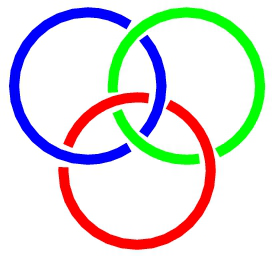Dr
Javier Vijande
(University of Valencia)
16/10/2008, 15:00
Talks at Critical Stability V (Erice, October 2008)
Normal
In order to discuss the stability of four–quark states against dissociation into two isolated
mesons we shall present in this talk an exact method to study four-quark systems based on the hyperspherical harmonics formalism. We shall apply it to several physical systems of interest containing two heavy and two light quarks using different non–relativistic quark-quark potentials. Our...
Prof.
Jean-Marc Richard
(LPSC, University of Grenoble, France)
16/10/2008, 15:35
Talks at Critical Stability V (Erice, October 2008)
Normal
The quark--antiquark confining potential, V2(r)=r (in appropriate units) is generalised to baryons as
V3=min(d1+d2+d3), where di is the distance of the ith quark to a junction whose location is adjusted to minimise the interaction. Hence estimating V3 involves solving the famous Fermat--Torricelli problem.
The extension to the tetraquark problem, initiated by several authors, has been...
Dr
Lucas Platter
(Ohio State University)
16/10/2008, 16:10
Talks at Critical Stability V (Erice, October 2008)
Normal
The zero range model with proper renormalization is a powerful too calculate a variety of interesting low-energy observables in nuclear and atomic physics. In the three-body sector this approach reveals many interesting features (such as approximate discrete scale invariance) of systems with large scattering length.
In my talk I will discuss the zero-range in the more general context of...
Dr
Jose D'Incao
(U. Colorado)
16/10/2008, 17:00
Talks at Critical Stability V (Erice, October 2008)
Normal
In this talk, I will discuss general properties of few-body collisions and their influence
on ultracold quantum gases in the regime where interatomic interactions are strongly
affected by a Feshbach resonance. Since the early days of the achievement of Bose-Einstein
condensation, it has been recognized that few-body processes are of crucial importance in
determining the stability of...
Dr
Francesca Ferlaino
(Institut für Experimentalphysik and Institut für Quantenoptik und Quanteninformation, Innsbruck, Austria)
16/10/2008, 17:35
Talks at Critical Stability V (Erice, October 2008)
Normal
Ultracold atomic gases are versatile systems to study few-body physics because of full control
over the external and internal degrees of freedom. The scattering properties can be controlled
because of the magnetic tunability of the two-body scattering length in the proximity of a Fes-
hbach resonance and weakly bound dimers can be produced. Here, we experimentally explore
three- and...
Robin Kaiser
(CNRS)
16/10/2008, 18:10
Talks at Critical Stability V (Erice, October 2008)
Normal
Cold atoms have emerged as ideal quantum system to study coherent
transport properties of light. First experiments have established that
dilute samples with large optical thickness allow studying weak
localization of light.
The present goal of this research is to study coherent transport of
photons in dense samples. Anderson localization of light or superradiance
are among the most...

